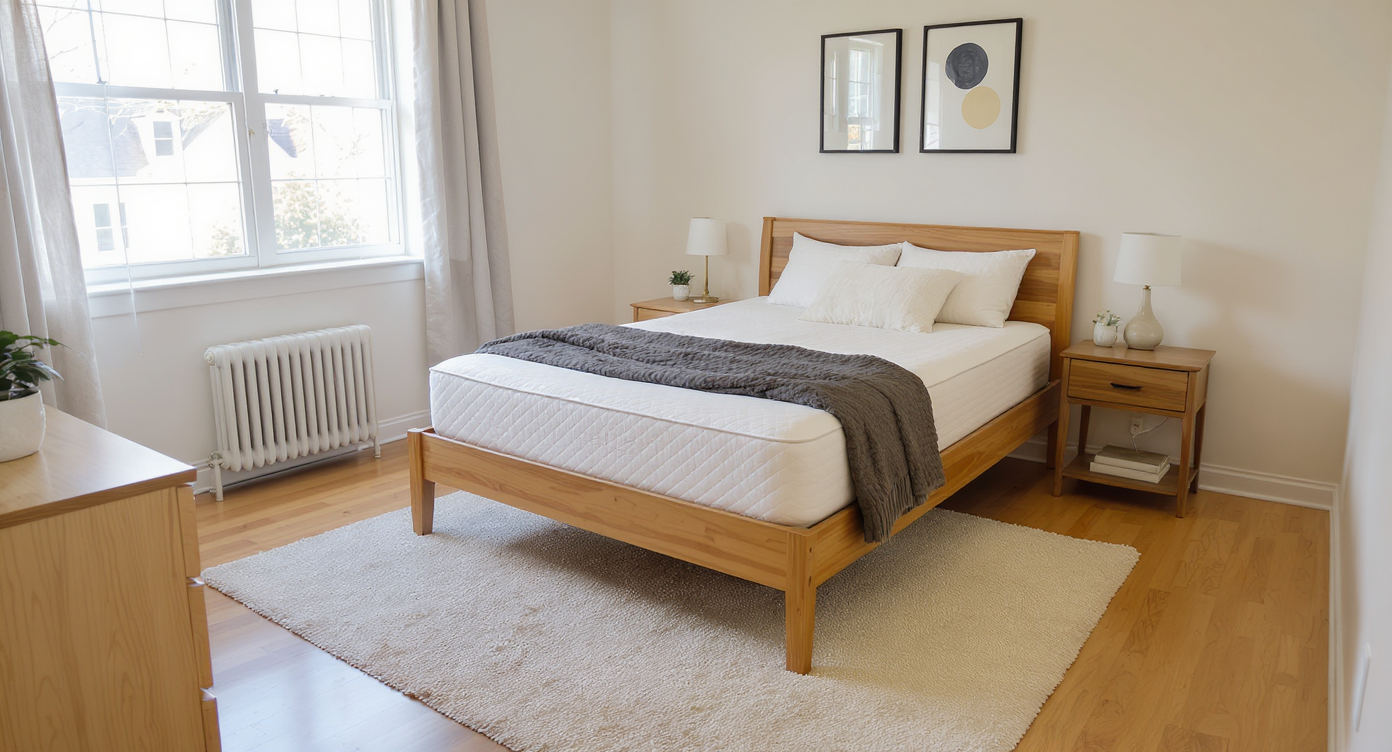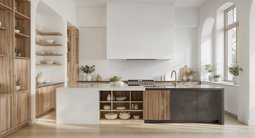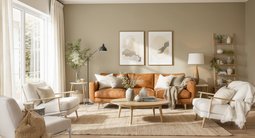TL;DR
Yes, buy strategically for a rental apartment—prioritize pieces that move well, resell easily, and elevate daily comfort. A practical rule: if you’ll stay 12–18 months or more, essential furniture pays for itself in comfort and resale value. Use secondhand finds, rental-friendly decor, and modular pieces to keep costs low and flexibility high.
Why investing in a rental can still pay off

Essential, adaptable furniture creates comfort and flexibility in a rental bedroom without overspending.
Wondering if you should buy furniture for a rental apartment? The short answer is yes—if you buy smart. The right pieces make daily life better, boost pride of place, and can move or resell when you do. For expat renters and long-term tenants alike, the goal isn’t to overinvest—it’s to choose adaptable essentials, secondhand deals, and rental-friendly decor that pay off in comfort.
Here’s the thing: empty rooms cost you more than you think. A basic sofa, a real dining surface, a proper mattress, a rug that fits—these shape how you sleep, eat, work, and host. Experts often suggest a 12–18 month horizon as a rule of thumb: if you expect to stay that long, buy core furniture you’ll keep, move, or resell. Use secondhand marketplaces, modular designs, and easy upgrades to keep risk low and quality of life high.
The essential strategy: how to buy furniture for a rental without regret
Rule of thumb: if you’ll live in a rental 12–18 months or longer, buying essential furniture is worth it in comfort and resale value. Designers often advise prioritizing pieces that are modular, small-space savvy, and easy to resell.
Start with the top four: mattress, sofa, table, lighting. A proper mattress (at least 10 inches thick) and supportive sofa impact your body daily. A table that doubles as a desk solves work-from-home needs. Layered lighting—one overhead, one task, one ambient—instantly warms a space.
- Buy secondhand first. Quality used pieces often sell for 30–60 percent below retail and maintain resale value. Search local thrifts, garage sales, and Facebook Marketplace.
- Choose modular or flat-pack items. Modular sofas, nesting tables, and lightweight bookshelves move easily through tight stairwells and future floor plans.
- Pick standard sizes. A queen bed (60 by 80 inches) and an 84-inch sofa fit most apartments. Rugs that are 8x10 work in many living rooms and resell fastest.
- Use a simple budget. Spend 70 percent on core comfort (mattress, sofa, task chair) and 30 percent on style builders (rugs, lamps, curtains). This keeps splurges focused.
How to furnish a rental on a budget: mix secondhand anchors with a few new, rental-friendly upgrades. Clip-on sconce lights, no-drill curtain rods, and peel-and-stick film for privacy or pattern can transform a room without risking your deposit. If the place is truly short-term, aim for furnishings that can sell within two weeks at 50–70 percent of what you paid. One frequent mover I spoke with buys an external monitor and decent desk chair every time, then resells both for about half; the comfort during long workdays is worth the difference.
User insight: many long-term renters treat each move as “home for now.” That mindset gives permission to invest in the basics while avoiding custom or built-ins. If you’re not actively planning a move, furnish for the life you’re living today.
Anecdote
A software engineer who’s lived in five countries told me he always buys IKEA or secondhand, one phase at a time. A mattress and a practical sofa come first, then plants and art. When he moves, he resells big items within a week at roughly half the purchase price and packs linens and decor in two suitcases. The constant thread is comfort, not permanence.
Common mistakes renters make (and quick fixes)
The most expensive mistake is doing nothing; an empty rental drains mood and productivity. Experts recommend setting a modest plan and furnishing in phases to avoid decision fatigue.
- Buying everything at once. Why it happens: panic-shopping after move-in. Fix: buy in two waves—Week 1 (sleep, sit, eat, light), Month 2 (rugs, curtains, storage).
- Rug sizes that are too small. Why: fear of committing. Fix: in living rooms, choose at least 8x10 so front sofa legs sit on the rug; small rugs visually shrink rooms.
- Oversized sofas in narrow rooms. Why: showroom bias. Fix: keep 30–36 inches of walkway clearance and cap sofa length around 84 inches in tighter spaces.
- Ignoring resale value. Why: focusing only on price. Fix: buy recognizable brands or solid wood; they resell faster and for more.
- Skipping window treatments. Why: deposit worries. Fix: tension or no-drill rods with lined curtains instantly add warmth and privacy without damage.
Pro tips and expert insights for rental-friendly design
For long-term renters, durable neutrals on big items with color in textiles offer the best flexibility. Experts often advise choosing warm neutrals for longevity and layering personality with art and rugs.
- Adopt a packing-light plan. Aim for furnishings that break down to pieces under 70 pounds each or fit through a 30-inch door.
- Think 3-2-1 for lighting. Three ambient, two task, one accent equals balanced, rental-friendly lighting that flatters every room.
- Lean art, don’t drill. Large frames can rest on consoles or shelves; removable hooks support up to 16 pounds without wall scars.
- Buy textiles you’ll keep. Curtains at 96 inches and 8x10 rugs move from home to home. Washable rugs are a smart pick for pets and high traffic.
- Plan an exit strategy. Photograph pieces in good light, keep receipts, and list resell prices at 50–70 percent of retail for quick sales.
Reflection: the best rental decor is portable identity—art you love, a lamp that looks good anywhere, a rug that sets the tone. These pieces make any apartment feel like yours within a weekend.
Tools, inspiration, and practical resources
Use these tools to streamline decisions and maximize resale value. Experts recommend visualizing before buying to reduce returns and mismatches.
- Room planners and AI mockups: test sofa size, rug layout, and color schemes before purchase with ReimagineHome. Drop in photos of your room and preview multiple styles fast.
- Secondhand sources: local thrift stores, garage sales, and neighborhood buy/sell groups. Set alerts for brands and dimensions.
- Rental-friendly upgrades: no-drill curtain rods, peel-and-stick wallpaper, clip-on sconces, plug-in pendants, tension shower rods with fabric liners.
- Suggested image alt text and captions for your listings or moodboard: “neutral modular sofa in a small rental living room,” “8x10 rug under 84-inch sofa,” “secondhand wood dresser, mid-century style, apartment ready.”
Visualization Scenario
Picture your living room tonight: an 84-inch neutral sofa with a soft 8x10 rug underfoot, a plug-in pendant pooling light over a small round table, linen curtains on a tension rod, and one framed print leaning on a console. Nothing drilled, nothing custom—yet it looks finished. You can host a friend this weekend, and if life changes, every piece can move or resell in days.
FAQ: Rental furniture questions people actually ask
- Should I buy furniture for a rental apartment?
If you’ll stay 12–18 months or more, buying essential furniture for a rental apartment is worth it for comfort and resale potential. Choose modular, standard-size pieces for easy moves. - How much should I spend on furniture when renting?
Allocate most of your budget to comfort: roughly 70 percent on mattress, sofa, and task chair, 30 percent on rugs, curtains, and lighting. This keeps quality where it matters and costs controlled. - What furniture should I buy first for a rental?
Start with a good mattress, an 84-inch sofa or loveseat, a dining/desk table, and layered lighting. These essentials transform daily function and set the tone for everything else. - How do I furnish a rental on a budget?
Buy secondhand furniture, use rental-friendly decor, and stick to standard sizes that resell easily. List items later at 50–70 percent of retail for quick turnover. - Can I resell furniture easily before moving?
Yes. Photograph in daylight, include measurements, and price at market comps; recognizable brands and solid wood pieces sell fastest on local marketplaces.
Make the place you live feel like home
Buy furniture for your rental apartment—just buy it like a traveler, not a settler. Choose standard sizes, modular designs, and secondhand value so everything moves with you or sells quickly when it’s time. If you’ll be there a year or more, the comfort return is real: better sleep, better hosting, better workdays.
Make a simple plan, furnish in phases, and give yourself permission to enjoy the space you’re in. And if you want to see three versions of your living room before lifting a finger, try a quick mockup in ReimagineHome and start living in a place that finally feels like you.




.svg)

.svg)



.png)